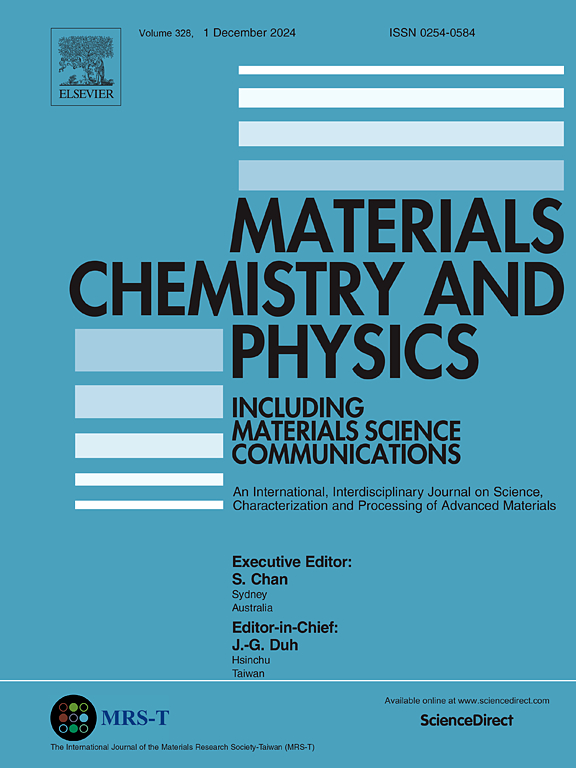Design and synthesis of a phosphorus-functionalized acrylate polymer for enhanced corrosion resistance in UV-cured coatings
IF 4.3
3区 材料科学
Q2 MATERIALS SCIENCE, MULTIDISCIPLINARY
引用次数: 0
Abstract
An acrylate-phosphorus-based monomer, bis[2-(methacryloyloxy)ethyl] phosphate (BMEP), is successfully prepared by the reaction of 2-hydroxyethyl methacrylate with phosphorus pentoxide (P2O5). The chemical structure of BMEP is elucidated via 1H NMR, 31P NMR, MS, and FTIR analyses. Subsequently, an aliphatic urethane acrylate oligomer (AUA) reacts with isoprenyl methacrylate (IPEMA), producing a novel polymer (UAIPA).This polymer is further modified by incorporating BMEP at concentrations of 2 %, 4 %, and 6 %, yielding phosphorus-containing polymers. These polymers are characterized using FTIR, XRD, SEM, DSC, TGA, and EDS. They demonstrate excellent corrosion inhibition properties, achieving an efficiency of approximately 99 %. Additionally, the adhesion performance of the phosphorus-containing polymers on metallic surfaces is evaluated, yielding a 5B rating. The high adhesion strength supports their potential as effective anti-corrosive coatings. In conclusion, the novel phosphorus-functionalized acrylate polymer exhibits exceptional multifunctional properties, making it highly suitable for advanced coating applications and opening up new possibilities in materials science and polymer chemistry.
光固化涂料中磷功能化丙烯酸酯聚合物的设计与合成
以甲基丙烯酸2-羟乙酯与五氧化二磷(P2O5)为原料,制备了丙烯酸-磷基单体双[2-(甲基丙烯氧基)乙基]磷酸(BMEP)。通过1H NMR, 31P NMR, MS和FTIR分析对BMEP的化学结构进行了鉴定。随后,脂肪族聚氨酯丙烯酸酯低聚物(AUA)与甲基丙烯酸异戊酯(IPEMA)反应,生成一种新型聚合物(UAIPA)。该聚合物通过加入浓度为2%、4%和6%的BMEP进一步改性,得到含磷聚合物。用FTIR, XRD, SEM, DSC, TGA和EDS对这些聚合物进行了表征。它们具有优异的缓蚀性能,缓蚀效率约为99%。此外,对含磷聚合物在金属表面的粘附性能进行了评估,得出5B级。高附着力支持了它们作为有效防腐涂料的潜力。综上所述,新型磷功能化丙烯酸酯聚合物具有优异的多功能特性,非常适合于先进的涂层应用,并为材料科学和聚合物化学开辟了新的可能性。
本文章由计算机程序翻译,如有差异,请以英文原文为准。
求助全文
约1分钟内获得全文
求助全文
来源期刊

Materials Chemistry and Physics
工程技术-材料科学:综合
CiteScore
8.70
自引率
4.30%
发文量
1515
审稿时长
69 days
期刊介绍:
Materials Chemistry and Physics is devoted to short communications, full-length research papers and feature articles on interrelationships among structure, properties, processing and performance of materials. The Editors welcome manuscripts on thin films, surface and interface science, materials degradation and reliability, metallurgy, semiconductors and optoelectronic materials, fine ceramics, magnetics, superconductors, specialty polymers, nano-materials and composite materials.
 求助内容:
求助内容: 应助结果提醒方式:
应助结果提醒方式:


